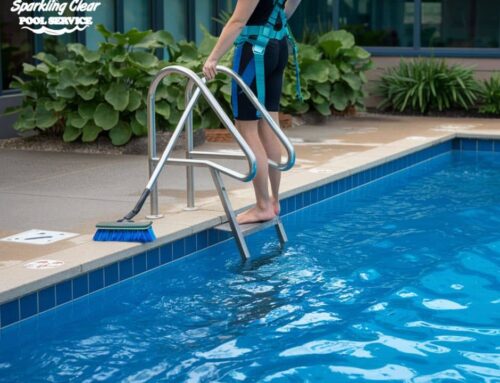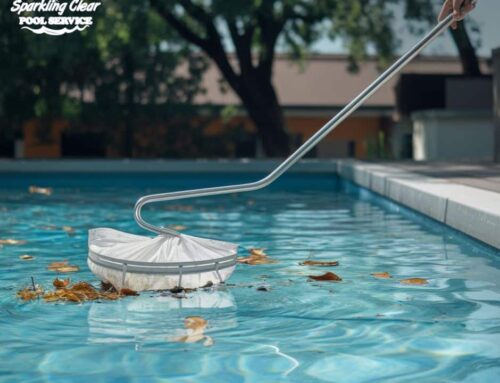Nothing ruins a refreshing dip in your pool quite like unsightly green stains marring the pristine white walls. But fear not, fellow pool owners! Let’s explore how to banish those algae stains and restore your pool to sparkling perfection.
Identifying Algae Stains
Before we explore removal strategies, let’s differentiate between algae growth and stubborn stains. Algae growth manifests as a slimy, green film or patches on your pool walls. Removing fresh algae growth is relatively simple. However, if the green persists even after cleaning, you’re likely dealing with stubborn algae stains. These stains are remnants of dead algae clinging to the pool walls, often caused by imbalanced pool water chemistry or insufficient cleaning.
The Culprits Behind Green Stains: Common Causes
Several factors contribute to the formation of algae stains in your pool, including:
- Imbalanced Water Chemistry: The most frequent culprit is imbalanced pool water chemistry. Improper chlorine levels, low pH, or insufficient algaecide create an environment conducive to algae growth.
- Improper Pool Maintenance: Neglecting regular cleaning and skimming allows algae spores to settle on the walls, forming a stain.
- Insufficient Circulation: Poor water circulation allows dead algae to settle and adhere to pool walls, increasing the likelihood of stains.
- External Factors: Environmental factors like excessive heat, strong sunlight, and heavy rainfall can accelerate algae growth and lead to stains if left unchecked.
Types of Algae Stains
Algae comes in various forms, each with its own staining characteristics:
- Green Algae: The most common culprit, causing a greenish discoloration on your pool walls.
- Black Algae: This stubborn variety adheres deeply to pool surfaces, leaving black or brown stains.
- Yellow Algae: Less frequent, yellow algae can cause yellowish or brownish stains on pool walls.
4 Steps to Remove Algae Stains
Here’s the step-by-step process:
- Test the Water: Grab your pool water test kit and analyze the essential parameters – chlorine level, pH, and alkalinity. Imbalances create perfect breeding grounds for algae, so get your water chemistry back in line according to your test kit instructions.
- Shock Therapy: Shocking the pool raises the chlorine level rapidly, killing any remaining algae spores in the water that could contribute to further staining. Always follow the manufacturer’s instructions for your specific pool shock product.
- Brushing Power: Scrub the affected areas of the pool walls with a stiff pool brush designed for algae removal. Focus on removing any visible residue.
- Vacuuming Up the Evidence: Thoroughly vacuum your pool to remove any loosened algae debris and prevent it from resettling and causing further staining. A good pool vacuum will clean your pool’s bottom and walls.
Tips to Prevent Algae Growth
Here are some tips:
- Maintain Consistent Pool Maintenance: Regular skimming, brushing, and vacuuming remove debris and prevent algae buildup.
- Balanced Water Chemistry Is Essential: Test your pool water weekly and adjust the chemicals as needed to maintain proper pH and chlorine levels.
- Invest in an Algaecide: Using a preventive algaecide, according to the manufacturer’s instructions, helps control algae growth before it becomes problematic.
- Maintain Proper Pool Circulation: To maintain good water circulation, ensure your pool filtration system runs for the recommended daily hours.
Maintain Your Pool Effectively with Sparkling Clear Pool Service
While these DIY methods can tackle most algae stains, sometimes professional help is needed. At Sparkling Clear Pool Service, our experienced technicians are equipped to handle even the most stubborn algae problems. We offer various cleaning and maintenance services to keep your pool sparkling clean and algae-free all season. Contact us today for further assistance. Call us at (214) 361-0255 for a quick consultation.






